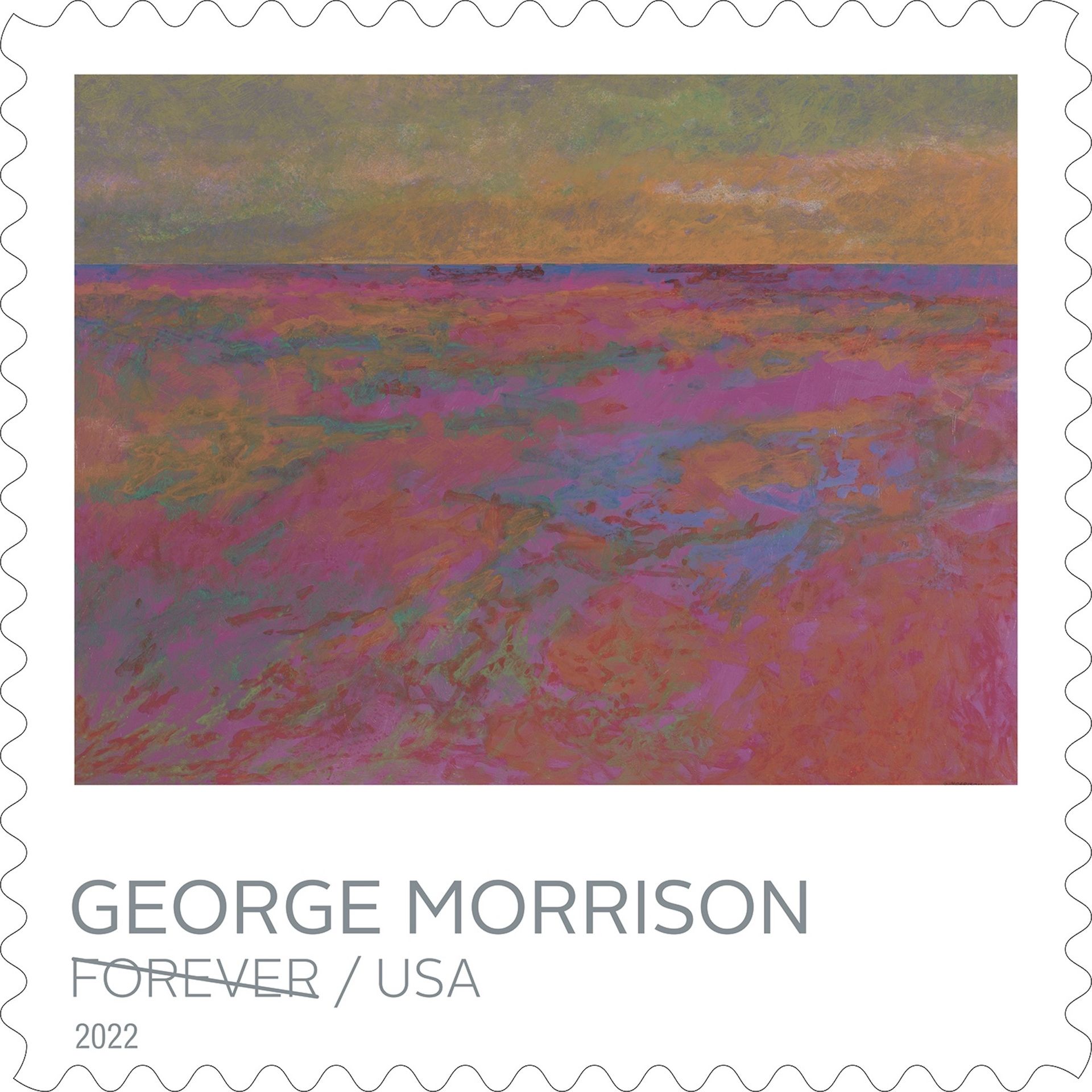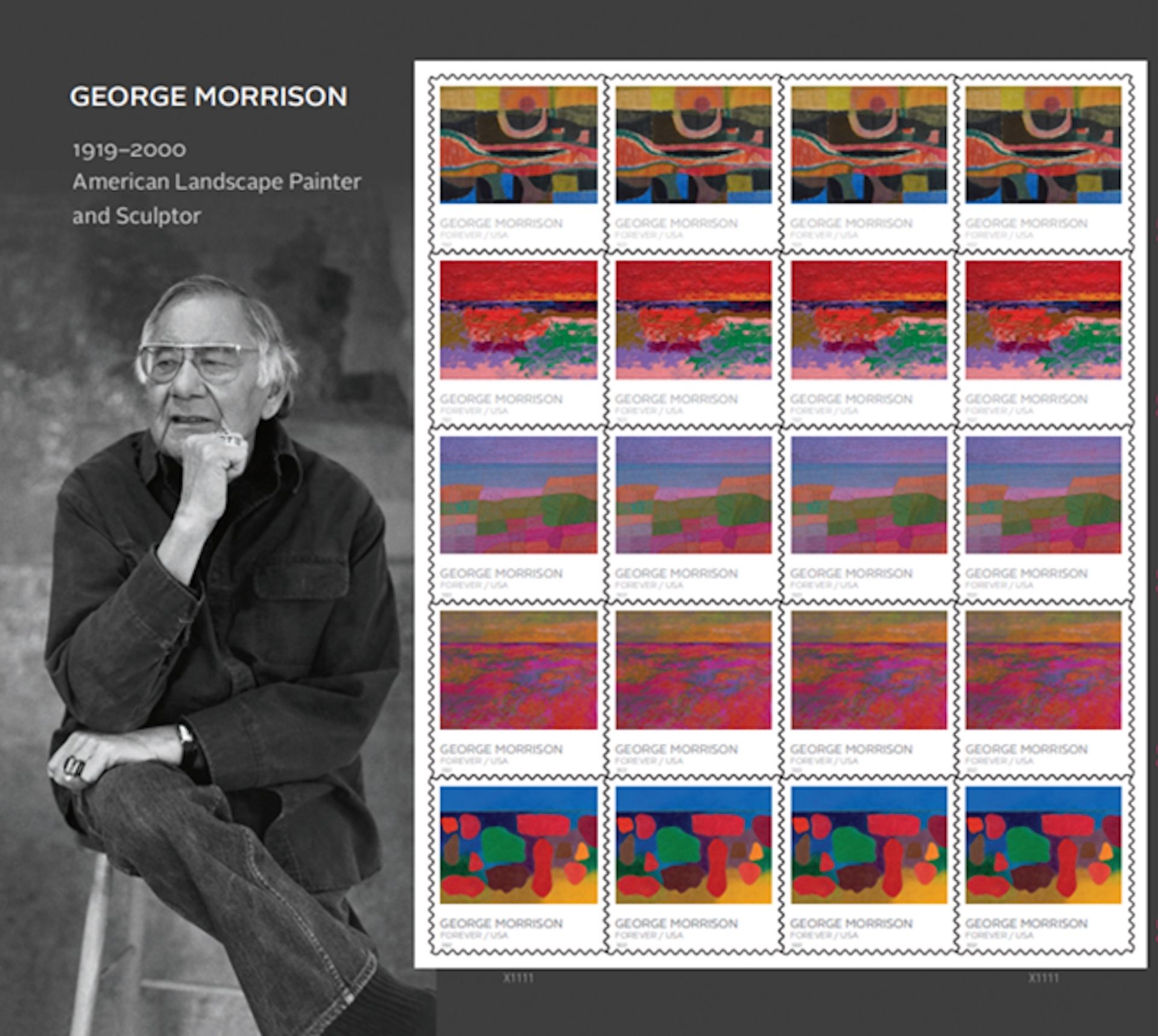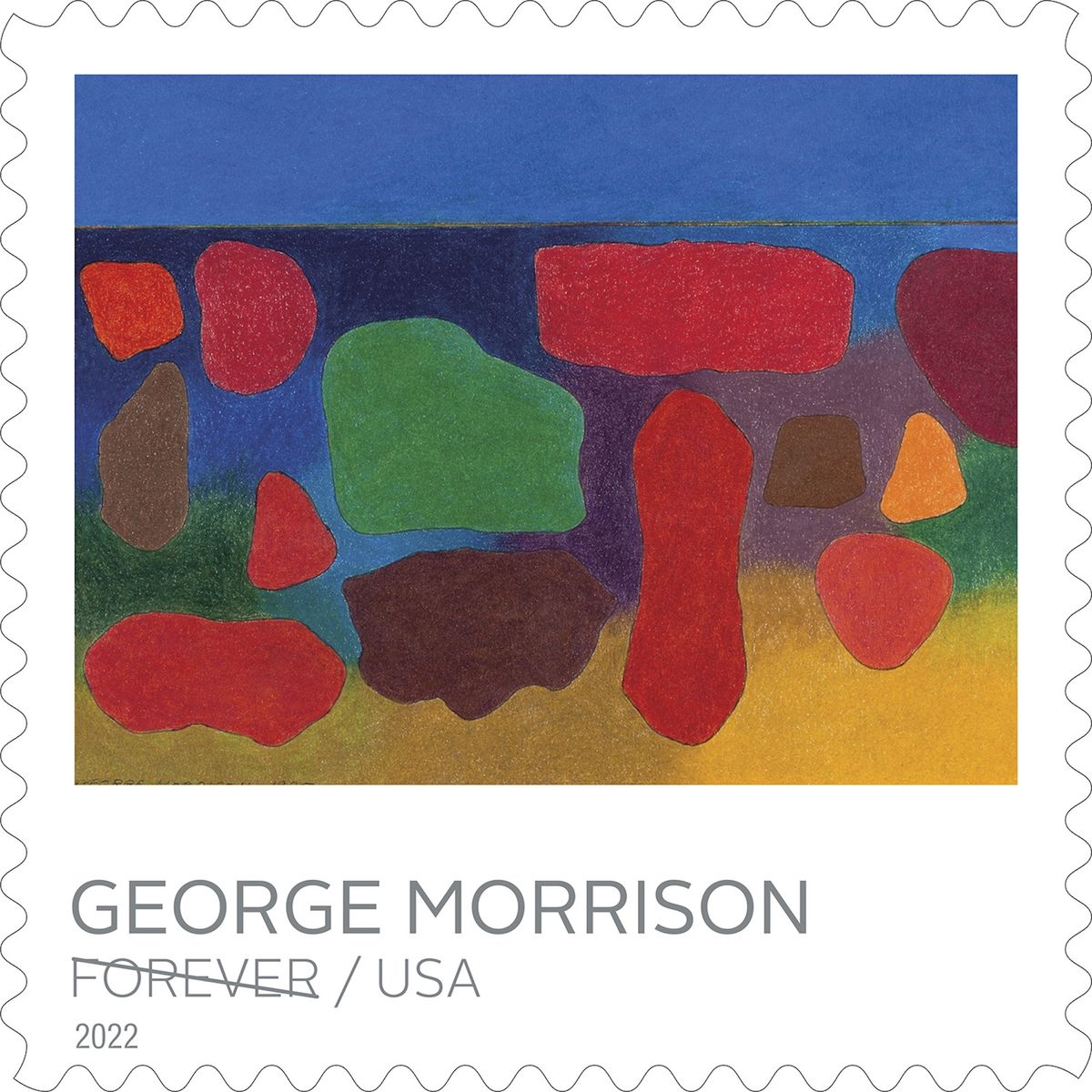The artist George Morrison (Chippewa) (1919-2000), an artist who left his native Minnesota to study art in New York City in the 1940s and became a member of the group of Abstract Expressionists who transformed painting, is honoured in a new line of United States Postal Service (USPS) stamps.
The five works featured in the set of Forever stamps span Morrison’s entire career, from the geometric 1949 work on paper Sun and River to his distinctive, boldly colourful landscape-inspired paintings of 1980s and an untitled pencil composition from 1995. Collectively, they chronicle his enormous contributions to Abstract Expressionism and Native American Modernism, which were only fully recognised later in his career after he had moved back to Minnesota. They also attest to his position within two communities—as one of very few artists of colour in the very white Abstract Expressionist movement, and as a Native American artist making work that largely rejected traditional imagery.
“As a Native American artist wanting to be a post-war avant-garde painter, he’s really of two worlds,” Dennis Jon, a curator at the Minneapolis Institute of Art (Mia), said in 2017 on the occasion of a Morrison exhibition at the museum. “At times he would say, ‘I need to put more Indian in my art,’ other times he would try to exclude that.”

Stamp featuring Spirit Path, New Day, Red Rock Variation: Lake Superior Landscape, 1990, by George Morrison Courtesy United States Postal Servcice
By highlighting Morrison’s paintings and works on paper, the stamp series focuses especially on his pieces that excluded Native American imagery and techniques. In the 1970s he began to incorporate some more overtly Native American process and materials into his practice. He started making sculptures: at first collage-like assemblages that approximated the proportions and compositions of landscape paintings with found driftwood, and later monolithic sculptures with abstract patterns of wood facets.
“I have never tried to prove that I was an Indian through my art,” Morrison once wrote. “Yet, there may remain deeply hidden some remote suggestion of the rock whence I was hewn, the preoccupation of the textural surface, the mystery of the structural and organic element, the enigma of the horizon or the colour of the wind.”
The Morrison stamps, which come in sheets of 20, are available for $11.60. They are the second set of Forever stamps recently released by the USPS that pay tribute to a Native American artist. In January, the postal service revealed a portrait of the Black and Ojibwe sculptor Edmonia Lewis as the latest in its “Black Heritage” stamp series.

The full sheet of George Morrison Forever stamps Courtesy United States Postal Service


